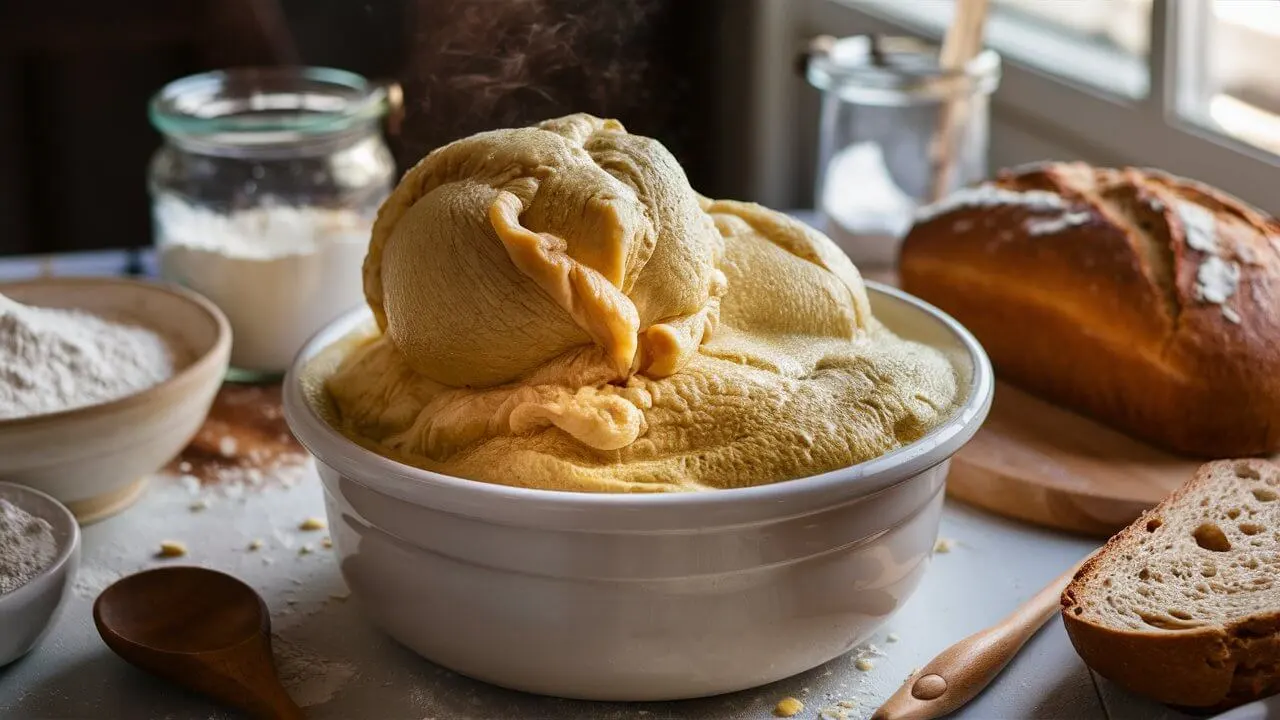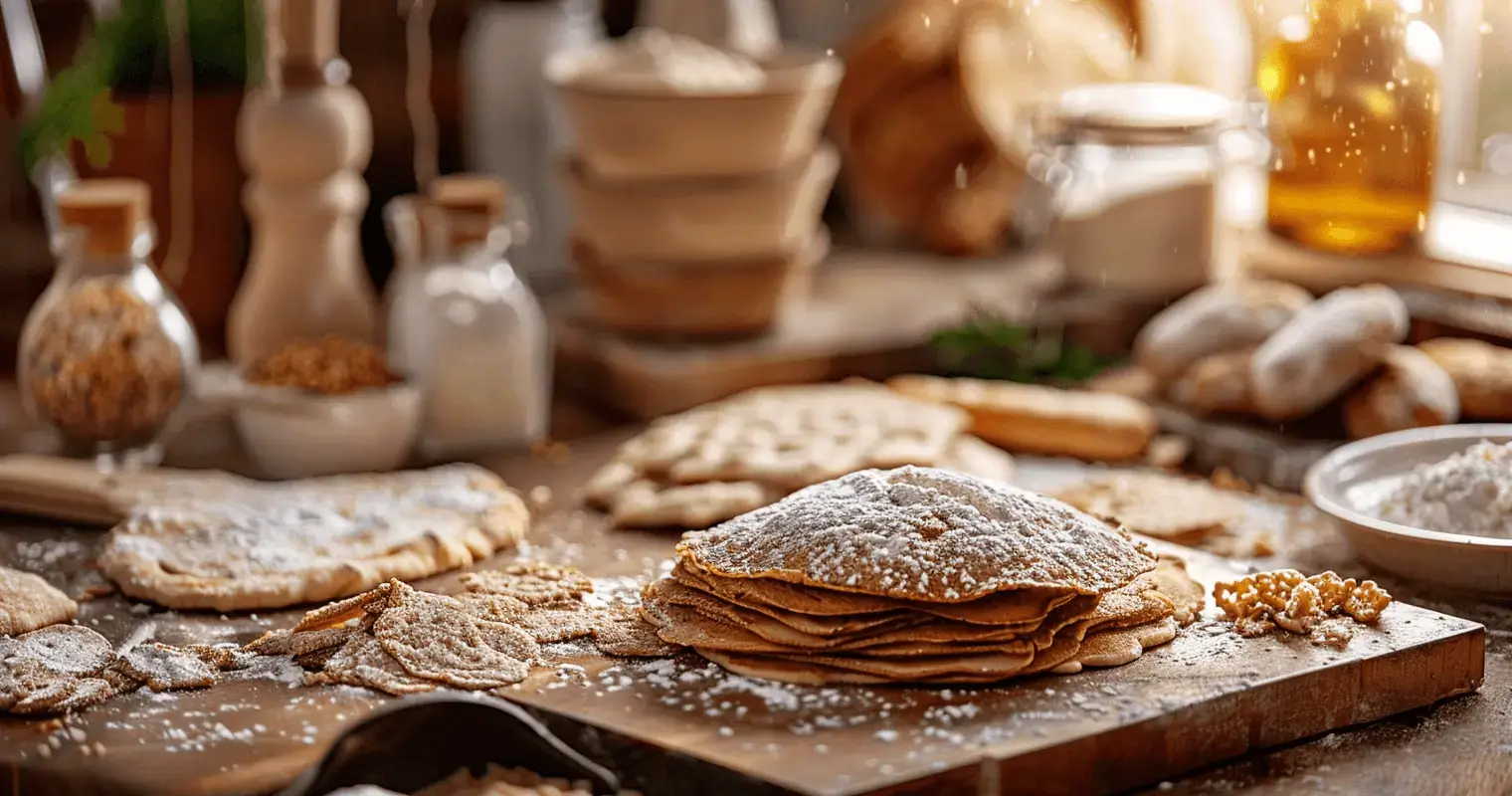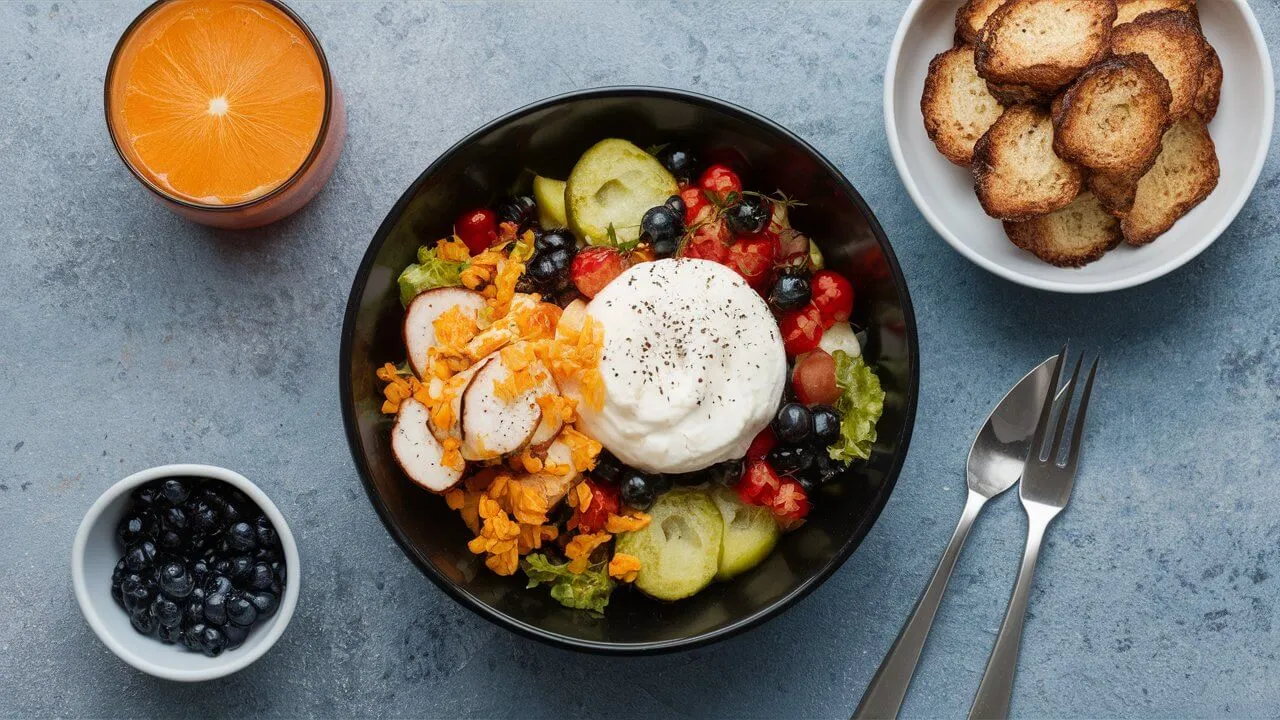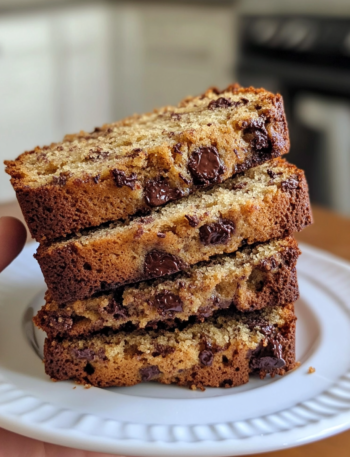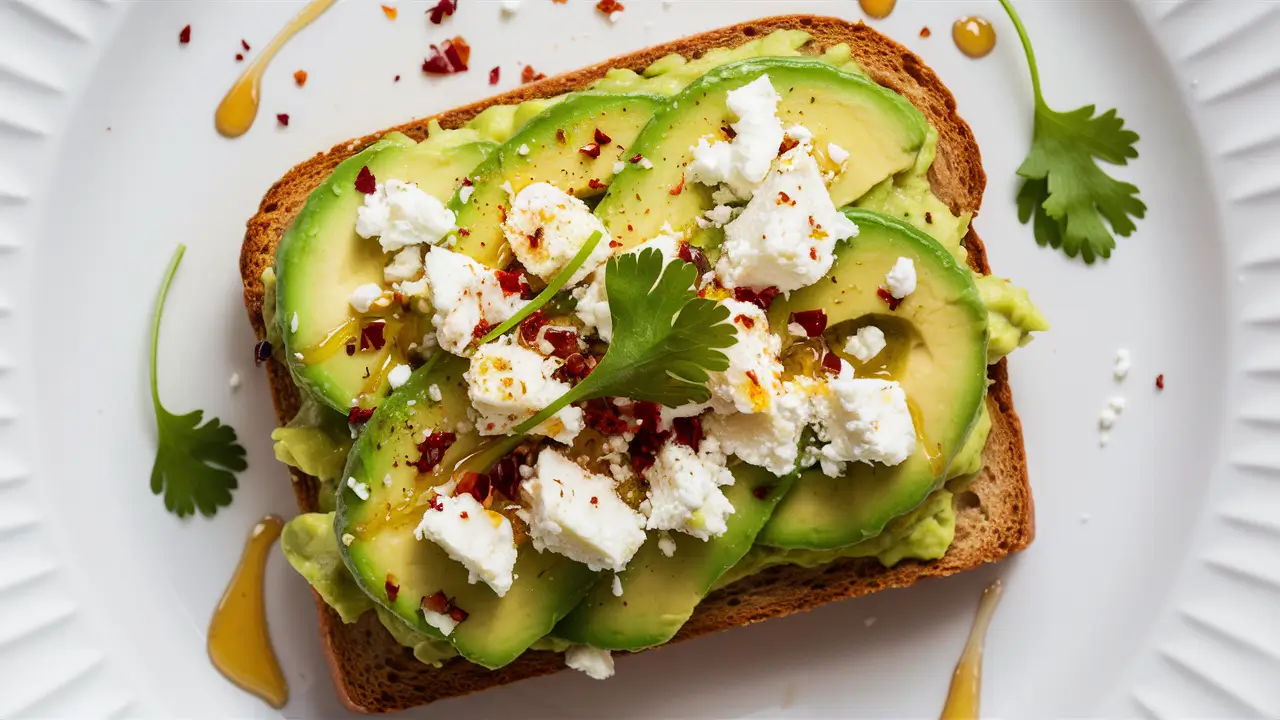Sourdough discard is the portion of sourdough starter that is removed and not used in bread baking to control the quantity and health of the starter. This by-product is often overlooked but holds potential in various culinary applications.
Creation of Sourdough Discard
- Feeding the Starter: Sourdough starters need regular feeding to stay healthy. This typically involves adding equal weights of flour and water to the existing starter. The feeding process replenishes the food supply for the yeast and bacteria, allowing them to continue growing and fermenting.
- Accumulation of Excess: Over time, as you continue to feed the starter, it grows in volume. To prevent it from becoming excessively large and unmanageable, a portion of the starter is removed before each feeding.
- Reason for Discarding: The primary reason for discarding a portion of the starter is to control the quantity and maintain an optimal balance of yeast and bacteria. By discarding some old starter, you make room for fresh flour and water, which helps keep the microbial community vibrant and active.
Composition of Sourdough Discard
- Microorganisms: Sourdough discard contains the same types of yeasts and lactic acid bacteria as the starter from which it was removed. These microorganisms are responsible for the leavening and flavor development in sourdough baking.
- Fermentation Byproducts: During fermentation, yeasts and bacteria produce various byproducts such as carbon dioxide, alcohol, and organic acids (like lactic and acetic acid). These contribute to the distinctive sour taste of sourdough.
- Flour and Water: Just like the starter, the discard is primarily made up of the flour and water that were used in the previous feedings. The types of flour can affect the flavor and activity of the discard.
Uses of Sourdough Discard
Rather than being wasted, sourdough discard can be used in a variety of recipes to add flavor and texture. These include pancakes, waffles, crackers, and even cakes. Using discard not only reduces waste but also leverages its unique tangy flavor.
In summary, sourdough discard is a byproduct of maintaining a sourdough starter, consisting of unneeded excess starter that has the same biological and chemical composition as the main batch. It can be creatively used in various dishes, adding a delicious and unique sourdough twist.
Fermentation Process
- Microbial Activity: At the heart of sourdough fermentation are two primary types of microorganisms: wild yeasts and lactic acid bacteria (LAB). These are naturally present in the flour and the environment. When flour and water are mixed to form a starter, these organisms begin to feed on the carbohydrates present in the flour.
- Production of Byproducts: As they metabolize the carbohydrates, these microorganisms produce several byproducts:
- Carbon Dioxide: This gas is produced primarily by the yeast and is what causes the dough to rise by creating bubbles in the dough matrix.
- Organic Acids: Lactic acid and acetic acid are produced mainly by LAB. These acids contribute to the sour flavor characteristic of sourdough and also lower the pH of the dough, which can help in preserving the bread and inhibiting the growth of harmful bacteria.
- Ethanol: A type of alcohol that is also a byproduct of fermentation, though most of it evaporates during baking.
- Maturation of the Dough: Over time, the fermentation process develops the dough’s flavor and texture. The acids produced during fermentation also help in strengthening the gluten network within the dough, improving its texture and elasticity.
Benefits of Sourdough Discard
- Flavor Enhancement: The acids and other fermentation byproducts in sourdough discard give it a unique tangy flavor, which can enrich the taste profile of various recipes.
- Health Benefits: Fermentation breaks down phytates found in flour, which can inhibit the absorption of minerals such as iron, zinc, and calcium. The reduced phytate levels in fermented sourdough products can improve mineral bioavailability.
- Prebiotic Content: The lactic acid bacteria in the discard can act as prebiotics, feeding the beneficial bacteria in the gut, which is essential for maintaining a healthy microbiome.
- Low Glycemic Index: Sourdough fermentation reduces the glycemic index (GI) of the bread. This slower digestion rate can be beneficial for blood sugar management, making sourdough a potentially better choice for people with insulin sensitivities.
- Waste Reduction: Using sourdough discard in various recipes not only enhances flavor but also promotes a sustainable baking practice by minimizing waste.
In summary, the science behind sourdough discard is rooted in the natural fermentation of wild yeasts and bacteria found in the environment. This process not only develops the distinctive flavors and textures associated with sourdough products but also brings several nutritional and health benefits, making it a valued component in both traditional and innovative baking.
Sourdough discard, a byproduct of the sourdough starter maintenance process, plays a pivotal role not only in bread making but also offers unique benefits thanks to its fermentation process. Let’s dive into the science behind this process and explore its benefits:
Fermentation Process
- Microbial Activity: At the heart of sourdough fermentation are two primary types of microorganisms: wild yeasts and lactic acid bacteria (LAB). These are naturally present in the flour and the environment. When flour and water are mixed to form a starter, these organisms begin to feed on the carbohydrates present in the flour.
- Production of Byproducts: As they metabolize the carbohydrates, these microorganisms produce several byproducts:
- Carbon Dioxide: This gas is produced primarily by the yeast and is what causes the dough to rise by creating bubbles in the dough matrix.
- Organic Acids: Lactic acid and acetic acid are produced mainly by LAB. These acids contribute to the sour flavor characteristic of sourdough and also lower the pH of the dough, which can help in preserving the bread and inhibiting the growth of harmful bacteria.
- Ethanol: A type of alcohol that is also a byproduct of fermentation, though most of it evaporates during baking.
- Maturation of the Dough: Over time, the fermentation process develops the dough’s flavor and texture. The acids produced during fermentation also help in strengthening the gluten network within the dough, improving its texture and elasticity.
Benefits of Sourdough Discard
- Flavor Enhancement: The acids and other fermentation byproducts in sourdough discard give it a unique tangy flavor, which can enrich the taste profile of various recipes.
- Health Benefits: Fermentation breaks down phytates found in flour, which can inhibit the absorption of minerals such as iron, zinc, and calcium. The reduced phytate levels in fermented sourdough products can improve mineral bioavailability.
- Prebiotic Content: The lactic acid bacteria in the discard can act as prebiotics, feeding the beneficial bacteria in the gut, which is essential for maintaining a healthy microbiome.
- Low Glycemic Index: Sourdough fermentation reduces the glycemic index (GI) of the bread. This slower digestion rate can be beneficial for blood sugar management, making sourdough a potentially better choice for people with insulin sensitivities.
- Waste Reduction: Using sourdough discard in various recipes not only enhances flavor but also promotes a sustainable baking practice by minimizing waste.
In summary, the science behind sourdough discard is rooted in the natural fermentation of wild yeasts and bacteria found in the environment. This process not only develops the distinctive flavors and textures associated with sourdough products but also brings several nutritional and health benefits, making it a valued component in both traditional and innovative baking.
Proper storage and management of sourdough discard are essential to ensure it remains useful and safe for cooking and baking. Here are some best practices for keeping your sourdough discard:
-
Storing Sourdough Discard
- Refrigerate for Short-term: For daily or frequent bakers, you can store your sourdough discard in the refrigerator in a sealed container. It usually stays good for up to seven days. Make sure to mark the container with the date you began storing the discard.
- Freeze for Long-term: If you’re not planning to use your discard soon, freezing is an excellent option. Place the discard in airtight containers or heavy-duty freezer bags in measured amounts, making it easy to thaw only what you need for a recipe.
- Managing the Accumulation of Discard
- Adjust Feeding Ratios: If you find you’re consistently having too much discard, consider reducing the size of your starter by adjusting your feeding ratios. This will result in less discard after each feeding.
- Feed Less Frequently: If your baking schedule is flexible, you might choose to store your starter in the refrigerator and feed it less frequently, thereby producing less discard.
-
Reviving and Using Discard
- Revive from the Fridge: Discard stored in the fridge may separate and develop a layer of liquid on top, often referred to as “hooch,” which can be stirred back in for a more tangy flavor or poured off for a milder taste. Let the discard come to room temperature and give it a good stir before using it in a recipe.
- Thawing Frozen Discard: Thaw frozen discard in the refrigerator overnight or on the counter for a few hours. Once thawed, stir well before using as the texture might change slightly after freezing.
- Optimizing Discard Usage
- Plan Recipes Around Discard: To make the most out of your discard, plan recipes that can incorporate it, such as pancakes, muffins, or even savory dishes like fritters or pizza dough. This planning helps minimize waste.
- Sharing Discard: If you have an abundance of discard, consider sharing it with friends or neighbors who bake, or even use it to teach others how to start their own sourdough journey.
-
Keeping Discard Healthy
- Regularly Inspect: Check your discard regularly for signs of mold or an off smell. Discard anything that looks or smells abnormal.
- Maintain Clean Storage Containers: Always use clean containers for storing your discard to avoid contamination with unwanted bacteria or mold.
Following these tips can help you maintain a useful and manageable supply of sourdough discard, making your sourdough baking both more productive and enjoyable.
When it comes to managing sourdough discard, effective long-term storage solutions like freezing and refrigerating are essential to ensure its viability and minimize waste. Here are detailed tips on how to freeze and refrigerate sourdough discard effectively:
Freezing Sourdough Discard
Freezing sourdough discard is a great option for those who don’t use it frequently but want to keep it on hand for occasional baking projects.
Steps for Freezing:
- Measure: Portion your sourdough discard into the amounts you typically use in recipes. This might be 1 cup or ½ cup increments, depending on your needs.
- Package: Transfer each portion into an airtight container or a zip-top freezer bag. If you are using bags, try squeezing out as much air as possible before sealing.
- Label: Write the date and the amount of discard on the container or bag. This helps you track how long it’s been stored and manage usage.
- Freeze: Place the containers or bags flat in the freezer for easier stacking and space management.
Thawing Tips:
- Refrigerator Thawing: Move the needed amount of discard from the freezer to the refrigerator one day before you plan to use it, allowing it to thaw slowly.
- Room Temperature Thawing: For quicker thawing, place the sealed bag or container at room temperature for a few hours until thawed.
- Stir Before Use: Once thawed, stir the discard well, as it may separate slightly during freezing.
Refrigerating Sourdough Discard
Refrigeration is suitable for short-term storage of sourdough discard, especially if you bake often.
Steps for Refrigerating:
- Container Selection: Use a clean, airtight container to store the discard. Glass containers with a tight-fitting lid are ideal as they don’t retain odors or flavors.
- Leave Space: Allow some room at the top of the container because the discard may expand slightly, even in the cold environment of a fridge.
- Label: Mark the container with the date of storage so you can use the oldest discard first and keep track of its freshness.
- Store: Place the container in a less crowded part of the refrigerator to maintain a consistent temperature.
Management Tips:
- Regular Checks: Inspect the discard for any signs of mold or off odors every few days.
- Stir Occasionally: If you’re storing the discard for more than a few days, give it a stir whenever you remember. This can help prevent excessive separation.
By following these guidelines, you can maximize the shelf life of your sourdough discard and ensure it’s ready to use whenever you’re inspired to bake. Whether you choose to freeze or refrigerate your discard, managing it correctly is key to maintaining its quality and functionality in baking.
Regulating Sourdough Discard Quantity Maintaining just the right amount of sourdough discard is crucial for both novice and experienced bakers. The key is regular use and proper storage. Use your discard in recipes like pancakes, waffles, or homemade crackers to keep it from accumulating. For storage, keep it in an airtight container in the refrigerator or freeze it for long-term use.
Benefits of Using Sourdough Discard
- Nutritional Benefits Sourdough discard isn’t just a leftover; it’s a nutrient-rich addition to recipes. It contains beneficial lactic acid bacteria, which can enhance the nutritional content of your dishes by improving mineral bioavailability.
- Waste Reduction and Sustainability Incorporating sourdough discard into your cooking routine is a step towards sustainable kitchen practices.
Health Benefits The probiotic nature of sourdough discard makes it more than just a baking ingredient; it’s a health booster. These probiotics support gut health and can improve digestion, making sourdough discard a worthwhile addition to your diet.
Practical Applications
- Replacing Flour You can use sourdough discard to replace part of the flour in recipes, which can add depth of flavor and improve texture.
- Recipe Ideas Try adding sourdough discard to pizza dough, cakes, or even homemade pasta to enhance flavor and texture. Each recipe allows the tangy flavor of the sourdough to shine through, making your dishes uniquely delicious.
Storage Techniques To maximize the lifespan and effectiveness of your sourdough discard, store it in the fridge in a tightly sealed container for up to a week. When ready to use, thaw it overnight in the fridge
Conclusion
Sourdough discard, more than just a by-product of maintaining a healthy starter. It enriches everything from breads and muffins to pizza crusts and fritters, promoting sustainable cooking by minimizing food waste. Useful for both experienced bakers and curious cooks, sourdough discard supports a sustainable lifestyle while adding a new dimension of flavor to your culinary creations.
FAQs
What exactly is sourdough discard? It’s the portion removed from a sourdough starter before feeding it with new flour and water to manage acidity and yeast levels. Although discarded, it remains rich in active yeasts and beneficial bacteria, making it valuable for various recipes.
1. How often should I remove discard from my starter? The frequency of removing discard depends on how often you feed your starter. If you maintain your starter at room temperature, you typically need to feed it twice a day. For those who keep their starter in the refrigerator, discarding and feeding might occur only once a week. It’s essential to adjust based on your baking schedule and the performance of your starter.
2. Can sourdough discard replace flour in recipes? Yes, you can use sourdough discard to replace some of the flour in recipes, especially in baking. It typically replaces about 10% to 25% of the flour, depending on the recipe. This substitution infuses a tangy flavor and unique texture into baked goods like pancakes, muffins, and breads. You may need to adjust the liquid content in the recipe because the discard is already hydrated.
3. What are the best storage methods for sourdough discard? Storing sourdough discard in the refrigerator is best if you plan to use it within a few days. For longer storage, you can freeze the discard for several months. Thaw it in the refrigerator overnight before use.
4. Are there any health risks associated with using sourdough discard? Using sourdough discard is generally safe and poses no health risks. If you store it properly and keep the starter healthy. However, if the discard or starter develops mold or an unpleasant odor, discard it and do not use it. Always keep the starter and discard in clean conditions to prevent contamination.
Innovative Sourdough Discard Recipes and Essential Baking Tips

